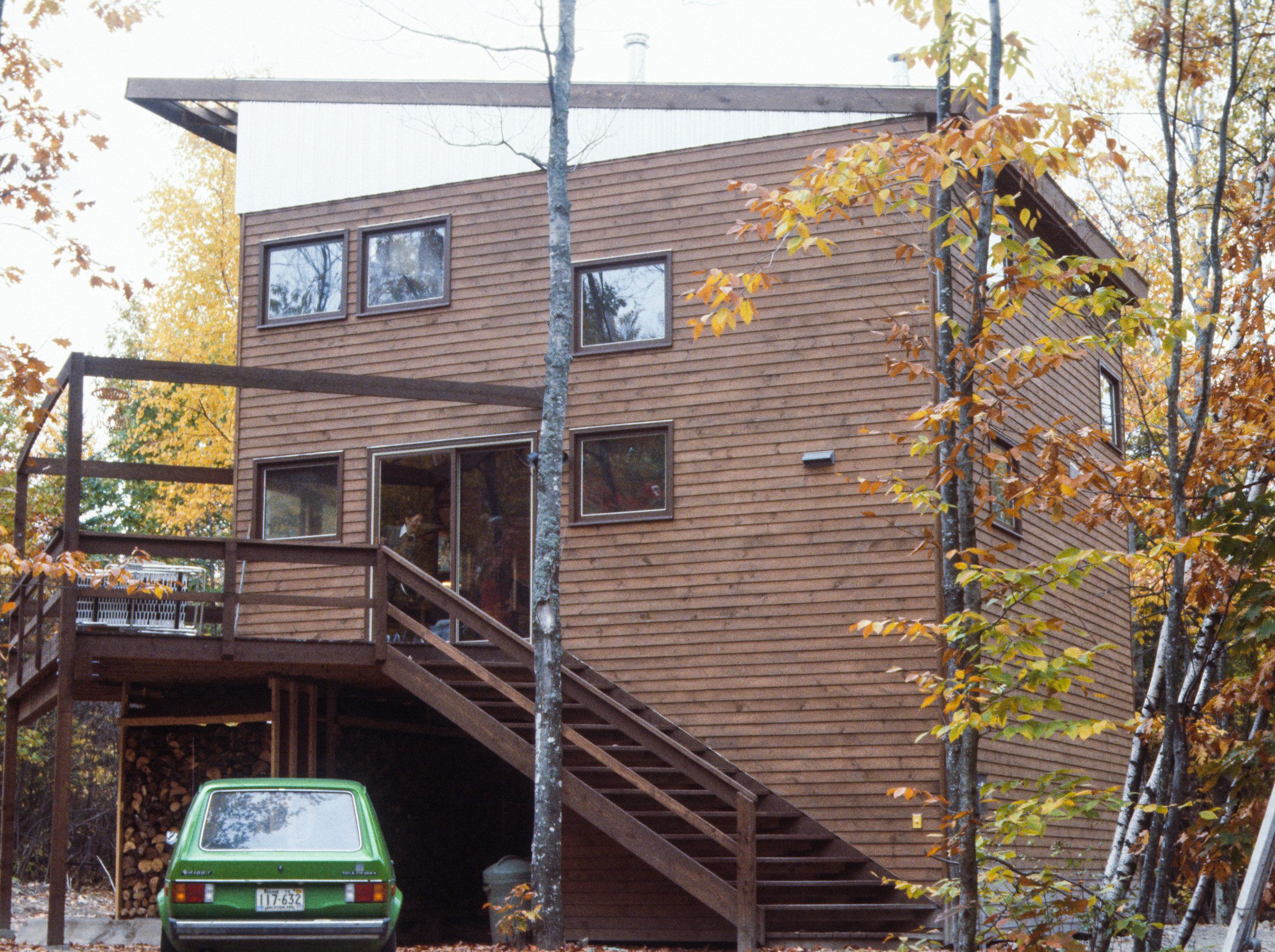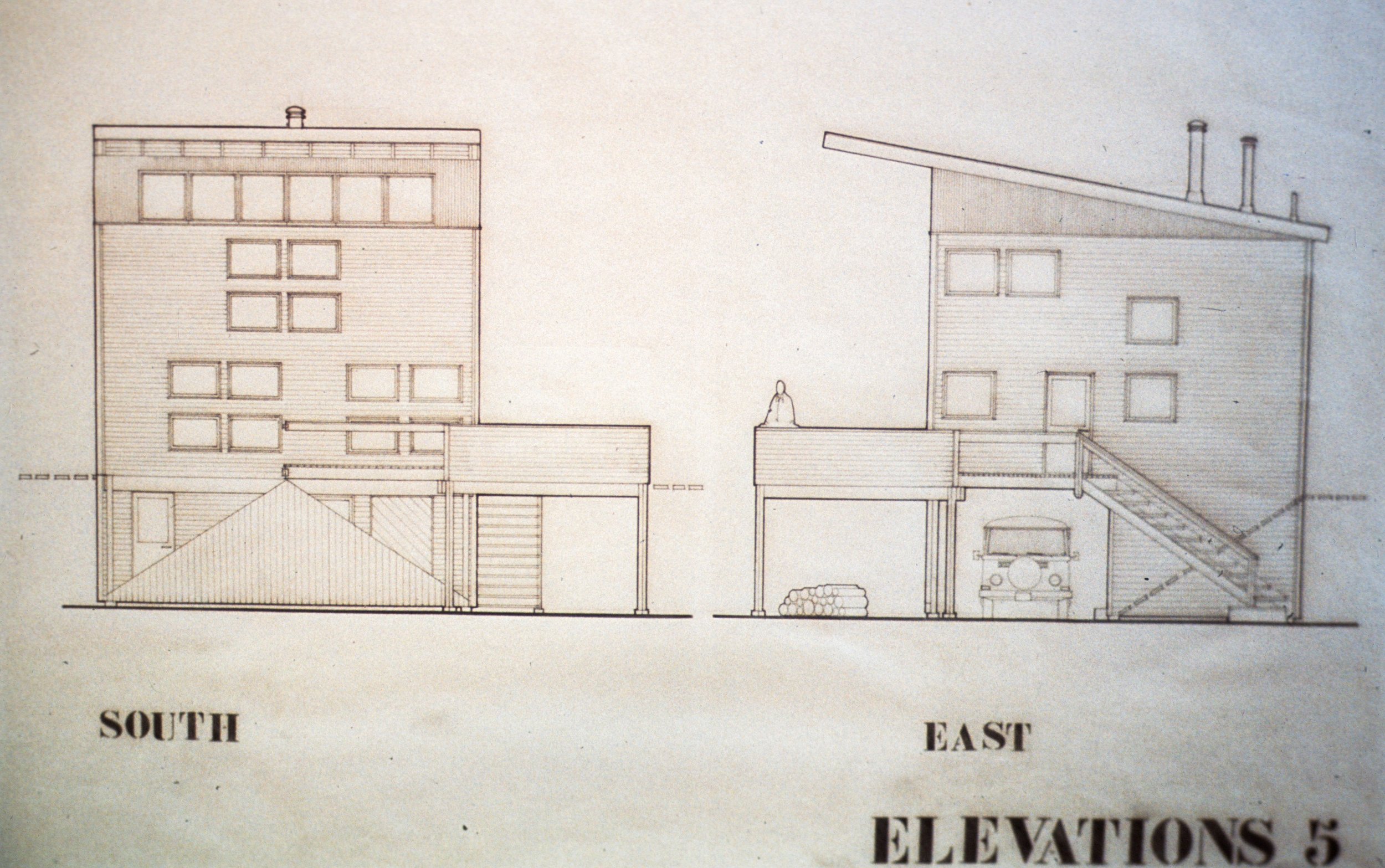The Modular House Project (1970-)
With Neale Mitchell Assoc., in Cambridge, MA, I spent most of 1970 working on Operation Breakthrough--a U.S. Department of Housing and Urban Development (HUD) project left dangling by the Lyndon Johnson administration (1963-69).
“As stated by then-Secretary George Romney, Operation Breakthrough is ‘not a program designed to see just how cheaply we can build a house, but is a way to break through to total new systems of housing production, financing, marketing, management, and land use’.”
The electoral victory of Richard Nixon in 1970 ended any hope of breaking through, and moved my family back to Maine.
Operation Breakthrough strongly influenced a project I initially called the Rural Housing Delivery System, submitted as a competition entry to the Main State Housing Authority in 1976. At the request of Housing Design Research (a project funded by the John Hay Whitney Foundation), I worked with a group of American Friends (Quakers) as the Community Design and Building Association (CDBA) to employ what was then called “appropriate technology” as the means to serve the housing needs of rural Mainers. Three demonstration homes were built to test the concept of owner-occupied cluster dwellings. Although our proposal won the competition, conflicts with the HUD Minimum Property Standards were never resolved so that federal financing was not forthcoming.
Two decades after inception, this foundational work served as the basis for my application to the Doctoral Program at Texas A&M University and informs research begun in 2018.
Moore/Weinrich Architects (Phase 2: 1978-93)
The second phase of the M/W practice is marked by a physical move from the western mountains of Maine to Brunswick on the coast. There we expanded with the growing economy by serving the historically ignored need for social infrastructure. The buildings we designed included schools and municipal buildings for fire, police and administration, as well as housing for the disabled. In this growth phase, the firm also served the University of Maine System.
Though it was satisfying to serve the infrastructure needs of Maine’s small communities at a larger scale, attending to institutional norms and tastes came at a price. Rural institutions tend to be conservative, at least with regard to social, ecological and technological change. What I came to understand was the threat of change in these three foundational building types drove institutions to focus on aesthetic novelty in lieu of sustainable technological or social innovation. As my interpretation of reality dawned, the economy dusked in 1989 with the Reagan Revolution, deregulation of the banks and economic recession.
On the basis of the firm’s prior work in rural infrastructure, I was given a one-academic-year Loeb Fellowship at the Harvard Graduate School of Design, beginning in the fall of 1990. On sabbatic-leave, I left a firm of 30-some good people in September. Nine months later, I returned to a firm of 5. I thought it might be a good time to go to graduate school to figure out what had happened.
Moore/Weinrich Architects (phase 1: 1974-78)
My practice with John Weinrich became an idea when we both worked with Deane M. Woodward Architects in Auburn, ME (1970-71). John later joined me in 1974, to form a partnership in the old Martin Farm buildings at Rumford Point, ME.
We built our practice by completing residential and historic preservation projects, then mixing the two idioms in what I later learned to call “critical regionalism”—a reference to the theoretical texts of Kenneth Frampton (who a decade later would become the distinguished member of my Ph.D. Dissertation Committee). When work was slow in the office we earned a living building furniture, farming and logging.
Doris Twitchell Allen Village (DTAV); the University of Maine at Orono.
Axonometric, Doris Twitchell Allen Village (DTAV)
Campus Center; the University of Southern Maine, Portland
Otisfield School
Otisfield School plan drawing
Stratton School
Stratton School Interior
Job Corps Center; Bangor, ME
Job Corps Center; Bangor, ME
Augusta City Center









